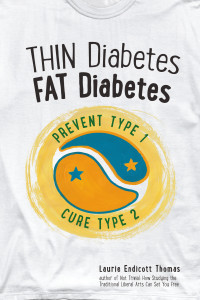During an annual physical, you are asked to step on a scale and your weight is recorded. Why is your physician concerned about your weight?
How does he/she determine if your weight might be an indicator of current or future health problems?
Body Mass Index (BMI)
Something called your Body Mass Index (BMI) is used to determine if you are considered underweight, normal weight, overweight or obese. BMI is defined as a weight-to-height ratio, calculated by dividing one’s weight in kilograms by the square of one’s height in meters and used as an indicator of obesity and underweight.
- A BMI of less than 18.5 = underweight
- A BMI of between 18.5 – 24.9 = normal weight
- A BMI between 25 – 29.9 = overweight
- A BMI between 30 – 34.9 = class I obesity
- A BMI between 35 – 39.9 = class II obesity
- A BMI greater than or equal to 40 = class III obesity
Limitations of the BMI
For the typical American in 2019, the BMI is likely to be a good indicator of overall body fatness. However, it is far from foolproof. It is simply a weight-to-height ratio. The BMI cannot tell us what percentage of bodyweight is made up of fat. Athletes with lots of muscle often have high BMIs even though they are very lean. The 2016 Denver Broncos did not have one player who had a BMI that fell in the normal range. That means that even wide receivers, running backs, defensive backs and even the kicker would be considered overweight or obese based on their BMIs.
Conversely, there is also research that shows that the average American who has a BMI in the normal range has a higher percentage of body fat than would be expected.
What are more Accurate Measures of Body Fat Percentage?
There are a variety of methods to determine body fat percentage with varying degrees of accuracy and cost. (ie. Skinfold Measurements, Bioelectrical Impedance, X-Ray Analysis and Water Displacement). These methods are not typically available at your doctor’s office.
What is Considered a Healthy Percentage of Body fat?
There is no single ideal percentage of body fat for men and women. Healthy ranges vary for both sexes based on age. Our percentage of body fat typically increases with age because we tend to increase body fat and lose muscle tissue as we get older. There are also different guidelines for athletes and non-athletes. In general, any man with a body fat percentage over 25% is considered obese and any woman with a body fat percentage over 32% is considered obese. Research shows that body fat percentage is a better predictor of cardiac risk factors than BMI.
This is a problem in America. The average American is overfat – even normal weight Americans!
Type of Body Fat Also Matters
Because a BMI cannot tell us anything about body fatness, it also can’t identify what type of body fat predominates. Visceral Fat is the fat that wraps around abdominal organs and is more likely than other types of body fat to raise your risk for heart disease, stroke, Alzheimer’s and Type 2 Diabetes. Only an expensive scan can measure visceral fat, but your physician won’t order a test just for that reason. Luckily, there is a simpler and much cheaper method to determine if someone is likely to be carrying excess visceral fat.
The Waist-To-Height Ratio (WHtR)
Many researchers now consider waist-to-height ratio (WHtR) to be a validated and universal index of central adiposity (fatness) for adults. WHtR is calculated by dividing waist circumference by height. A WHtR cutoff of 0.5 is generally accepted as a universal cutoff for central obesity in adults. This simply means that if your waist circumference is more than half your height, you’re likely to be carrying more visceral fat than is ideal. Some research has shown that an excess amount of visceral fat may increase cardiometabolic risk more than excess overall body fat.
Normal Weight May Provide a False Sense of Security
According to Mayo Clinic research presented at the European Society of Cardiology Congress in Munich, people who are of normal weight, but have fat concentrated in their bellies, have a higher death risk than those who are obese, Those studied who had a normal body mass index, but central obesity, had the highest cardiovascular death risk and the highest death risk from all causes, the analysis found. This research means that although you may have a BMI in the normal range, if you have a WHtR over 0.5, you likely have excessive overall and visceral body fat.
Losing Visceral and Overall Body Fat
No diet or exercise program allows you to choose the part of the body from which you want fat removed. If you lose overall body fat, some of the fat loss will be visceral fat.
As this article shares, long-term weight loss is very rare, but not impossible. There are many ways to lose weight in the short term, but the best chance for long-term success is to transition to a healthy lifestyle. A whole food plant based (WFPB) diet with regular moderate exercise is the way to go. This lifestyle will give you the best chance at long-term weight loss and reduce your risk for heart disease and other chronic diseases.
A WFPB diet is dominated by fruits, vegetables, whole grains, and legumes. Some nuts and seeds can also be eaten, but if weight loss is your goal, eat these in small portions. Nuts and seeds are calorically dense because of their high fat content.
Good Carbs are Good
Transitioning to a WFPB diet will increase the percentage of calories you get from carbohydrates. This should not concern you. You’ll be getting your “carbs” in a natural, healthy package. The carbs you need to limit or eliminate are added sugars and refined flours. The calorie density of a WFPB diet is likely to be low enough to create a situation where your calorie intake will be less than your calorie expenditure.
NIH Study Provides another Reason Not to Fear Carbs
A research study by Kevin Hall of the National Institutes of Health (NIH) revealed that cutting dietary fat reduces body fat more than cutting carbs. Restricting dietary fat led to body fat loss at a rate 68 percent higher than cutting the same number of carbohydrate calories when adults with obesity ate strictly controlled diets.
This study had to be a short-term study because you can only lock people in a metabolic ward setting for so long.
The researchers had previously simulated the study with a math model of human metabolism, whose body fat predictions matched the data later collected in the study. When simulating what might happen over longer periods, the model predicted relatively small differences in body fat loss with widely varying ratios of carbs to fat. Those results suggest the body may eventually minimize differences in body fat loss when diets have the same number of calories.
The researchers concluded that more research is needed to assess the physiological effects of fat and carb reduction in the long term.
In Summary
- A high Body Mass Index (BMI)cannot be used as proof of over fatness
- A normal Body Mass Index (BMI) does not necessarily indicate a healthy level of body fat.
- High amounts of overall body fat and visceral fat indicate increased risk for heart disease and other chronic diseases.
- A normal BMI with a high waist-to-height ratio (WHtR) may be especially problematic
- A low fat WFPB diet is likely to be the best way to reduce overall body fat, visceral fat and their concomitant health risks.
Bonus info and Links You May Find Interesting
Kevin Hall received funding for his study from a not-for-profit organization named The Nutrition Science Initiative (NuSI). This organization was founded by Gary Taubes and Peter Attia, MD — two low carb advocates who wanted to use NuSI to investigate their favored carbohydrate-insulin hypothesis of obesity.
Hall agreed to receive funding from NuSI with the agreement that NuSI would not interfere with the study data or interpretation. When the results of the study essentially falsified the carbohydrate-insulin hypothesis of obesity, NuSi did not react well. NuSi’s subsequent interference in preventing the release of these results to the American Diabetes Association was one of the reasons Hall resigned from his NuSI supported position in January of 2016.
Hall wrote a review of the carbohydrate-insulin model of obesity in 2017 which was published in The European Journal of Clinical Nutrition.
If you’d like to learn more about NuSi’s collaboration and subsequent falling out with Dr. Hall, you can read Stephen Guyanet’s article called “NuSI in retrospect”.






 E Excerpt from Laurie Endicott Thomas’s amazing book Thin Diabetes – Fat Diabetes by clicking here!
E Excerpt from Laurie Endicott Thomas’s amazing book Thin Diabetes – Fat Diabetes by clicking here!
Speak Your Mind